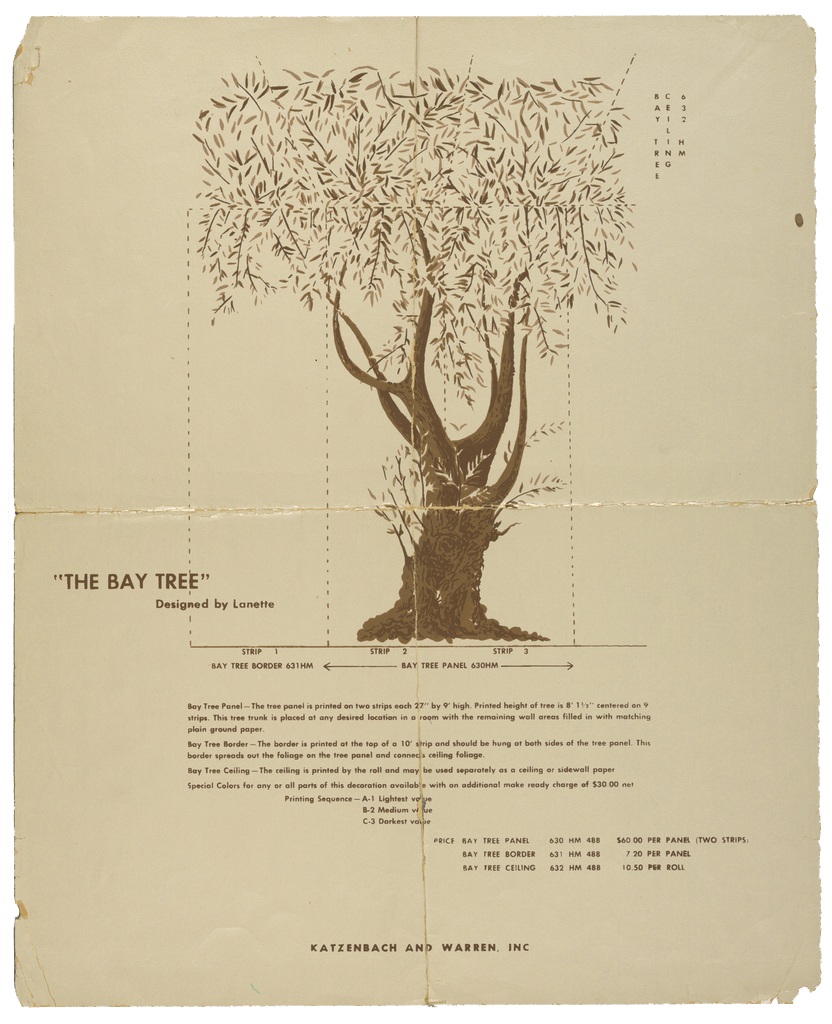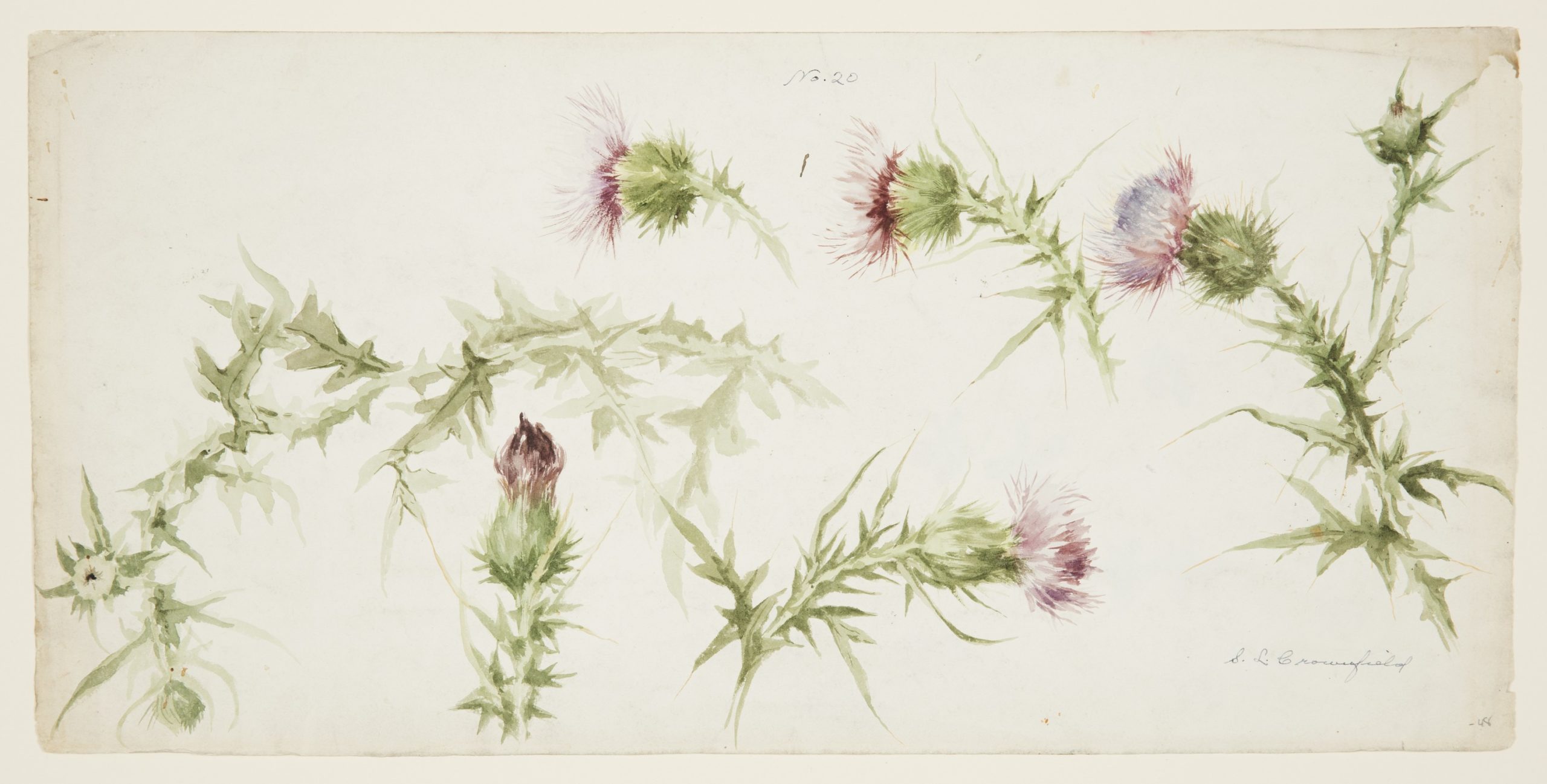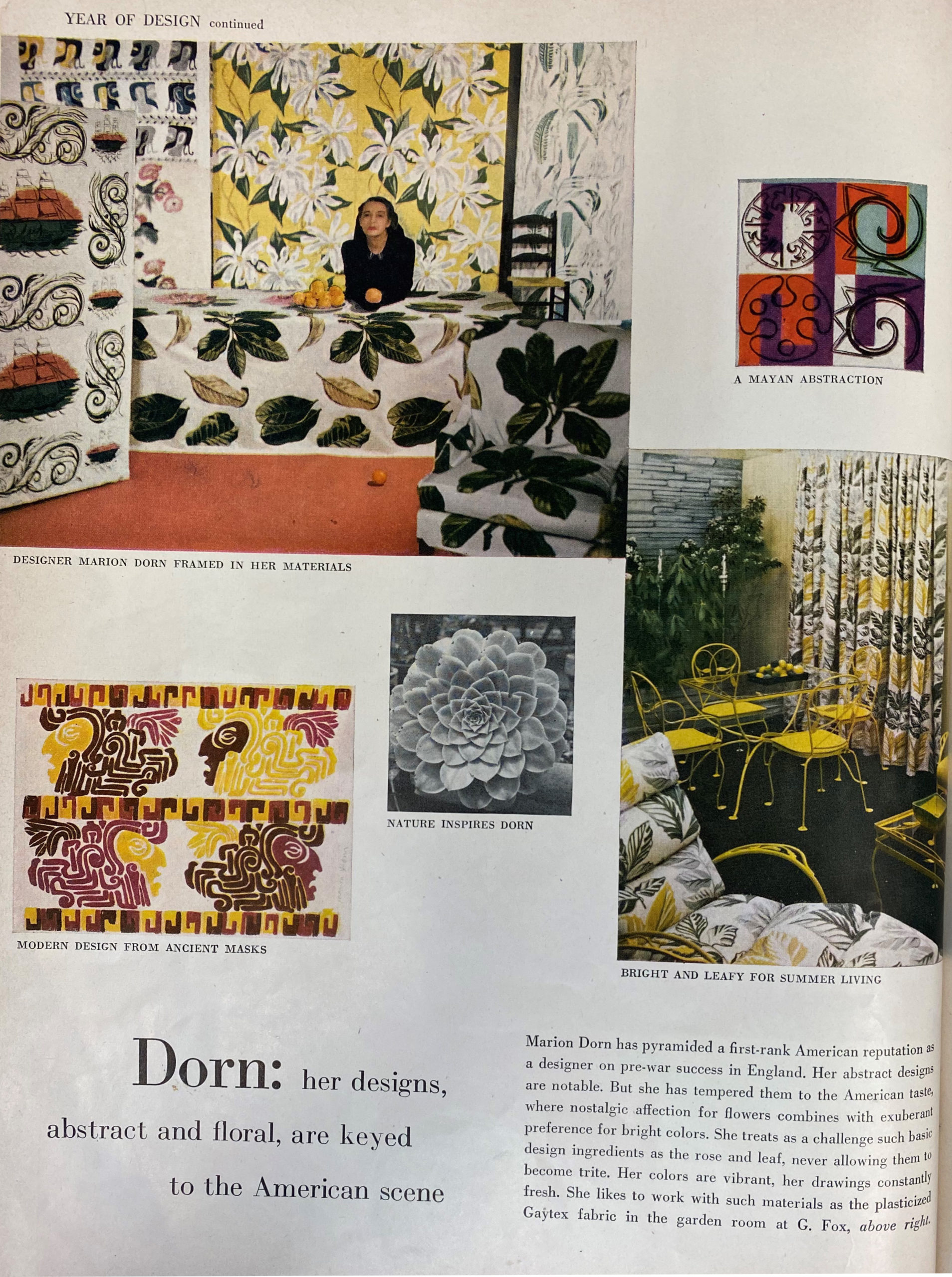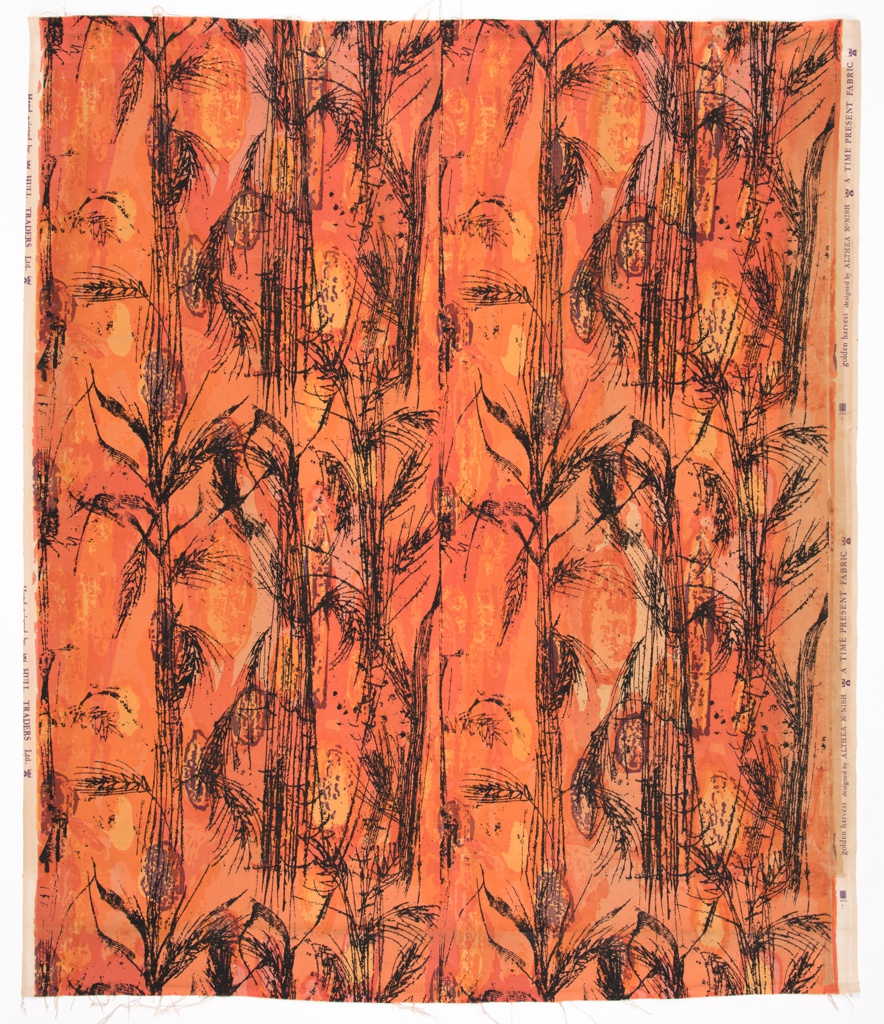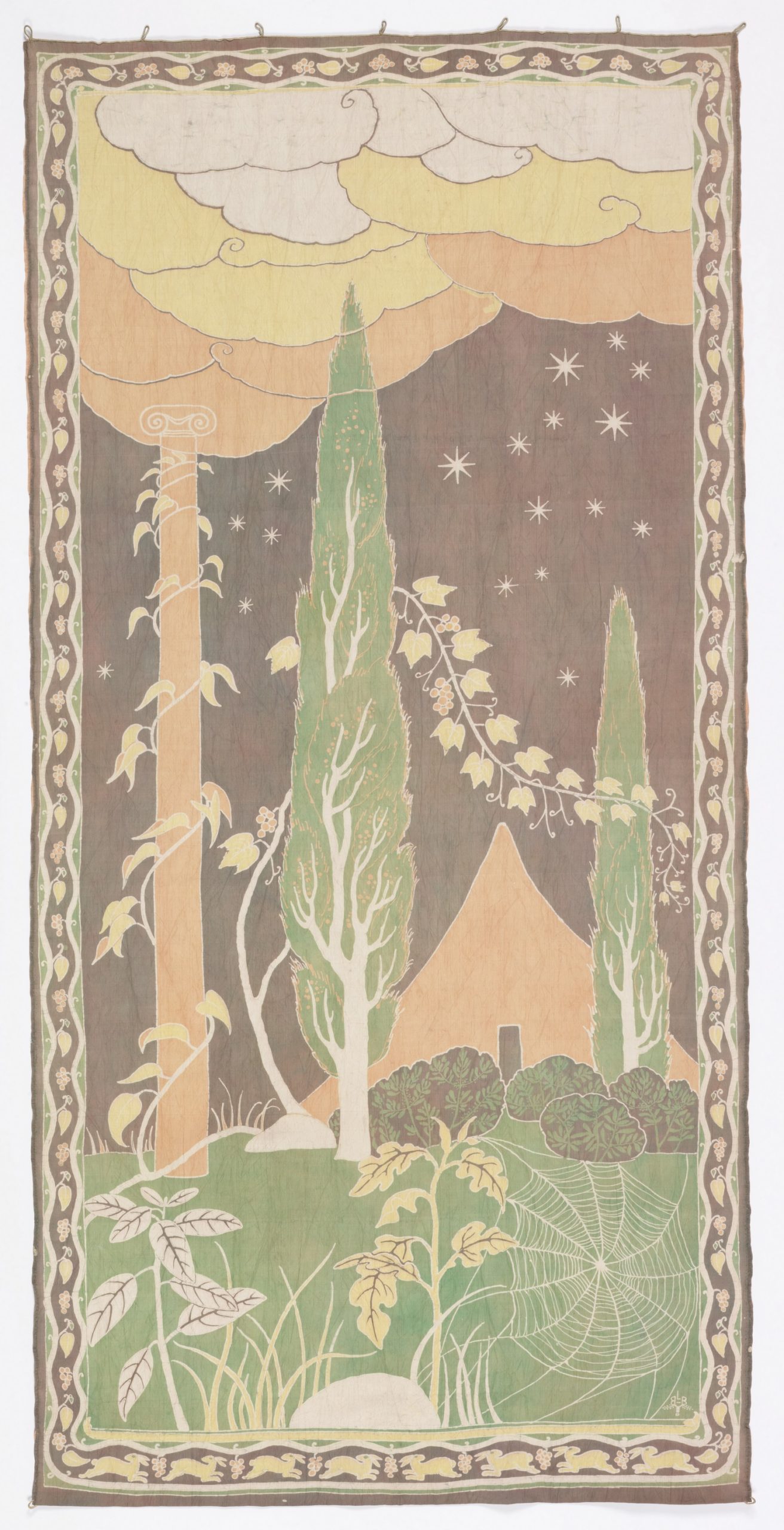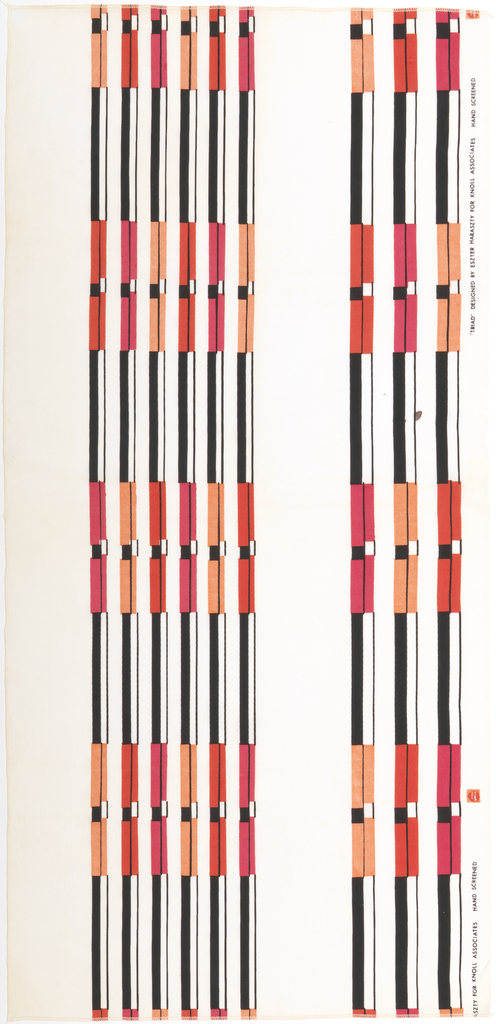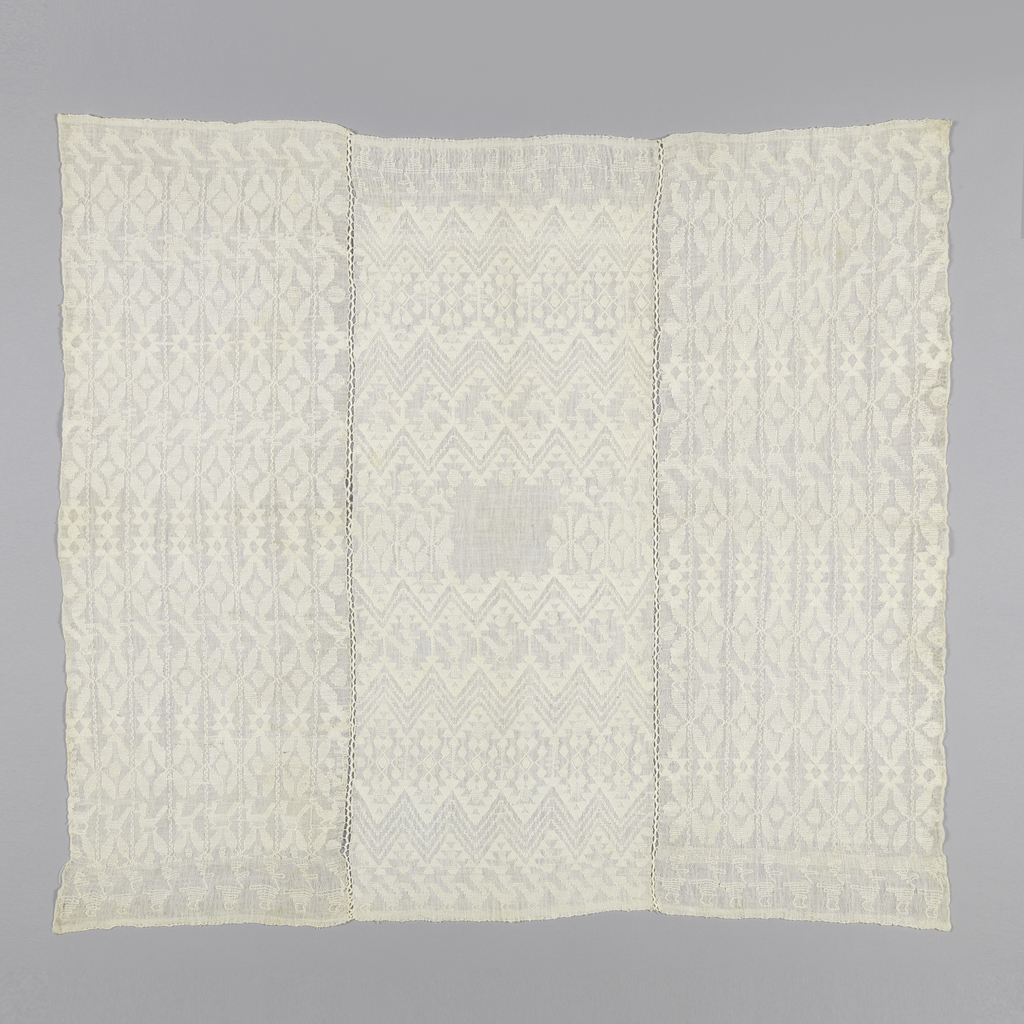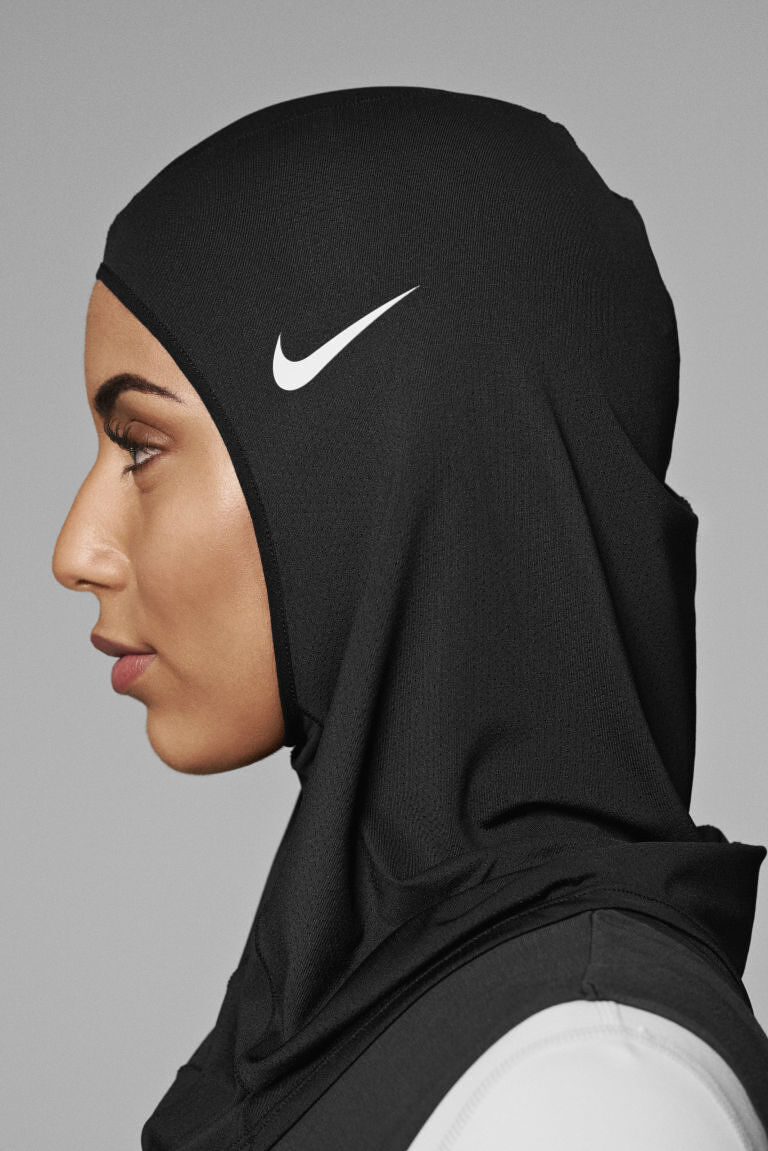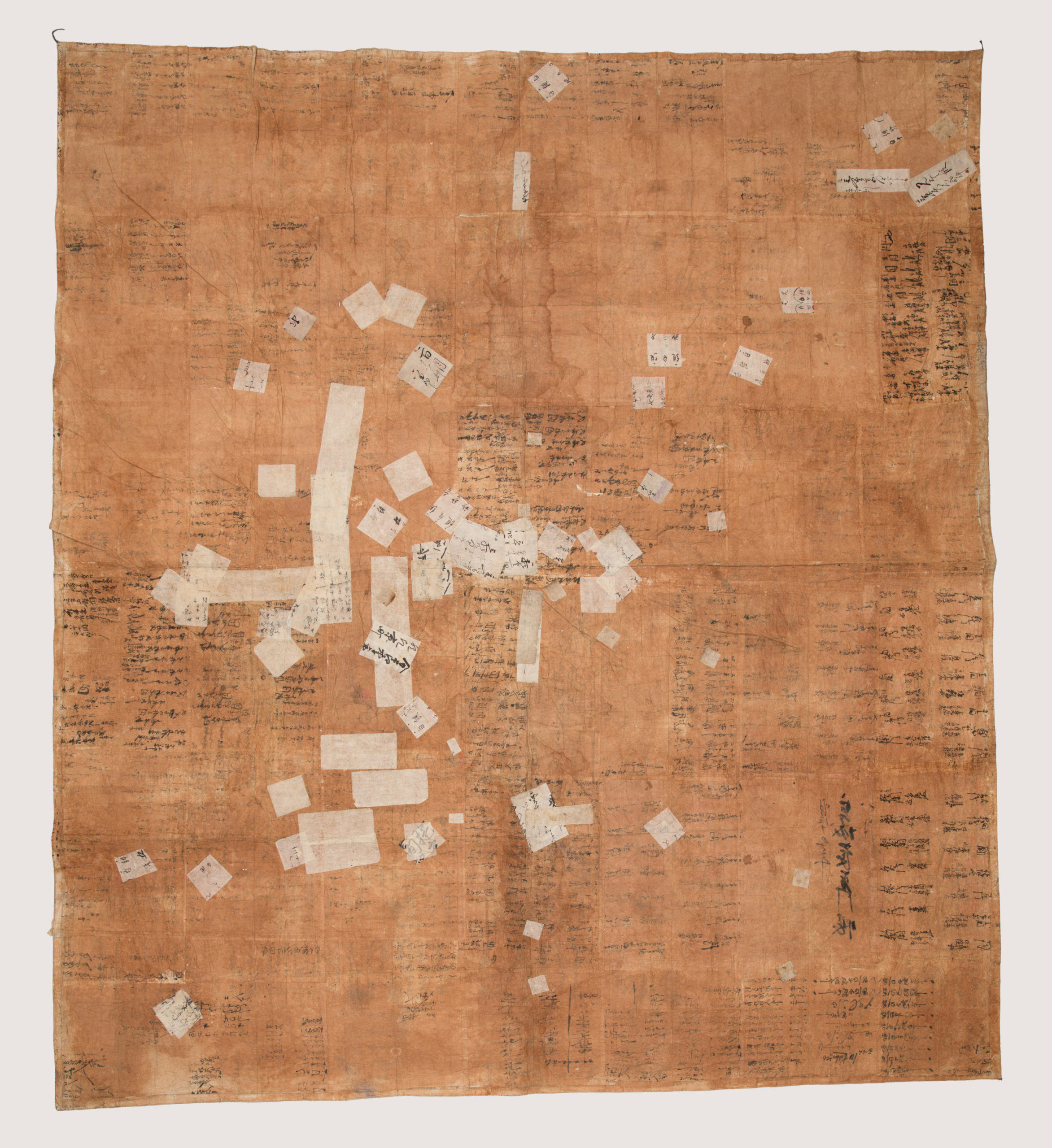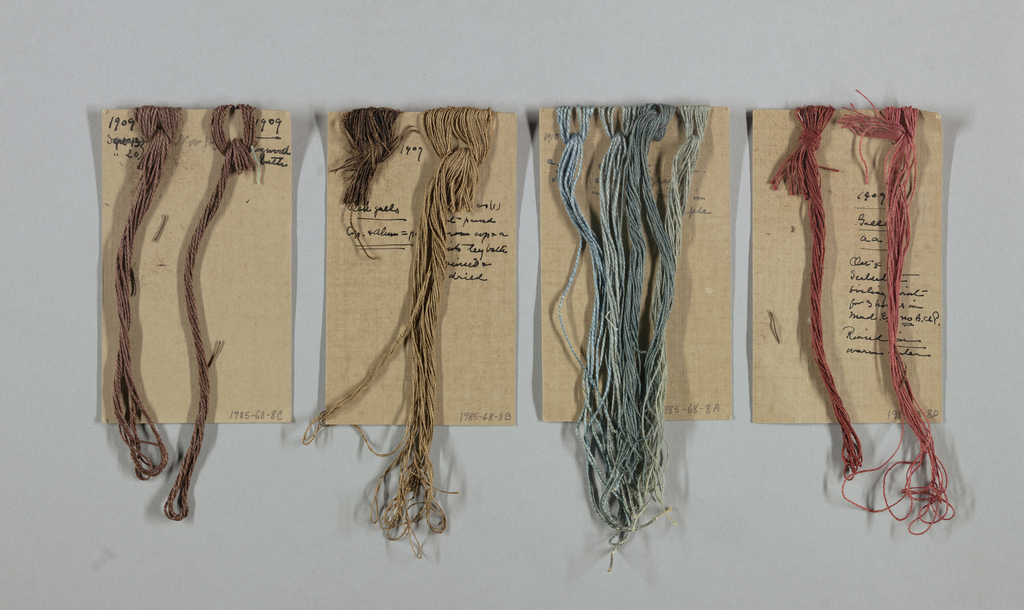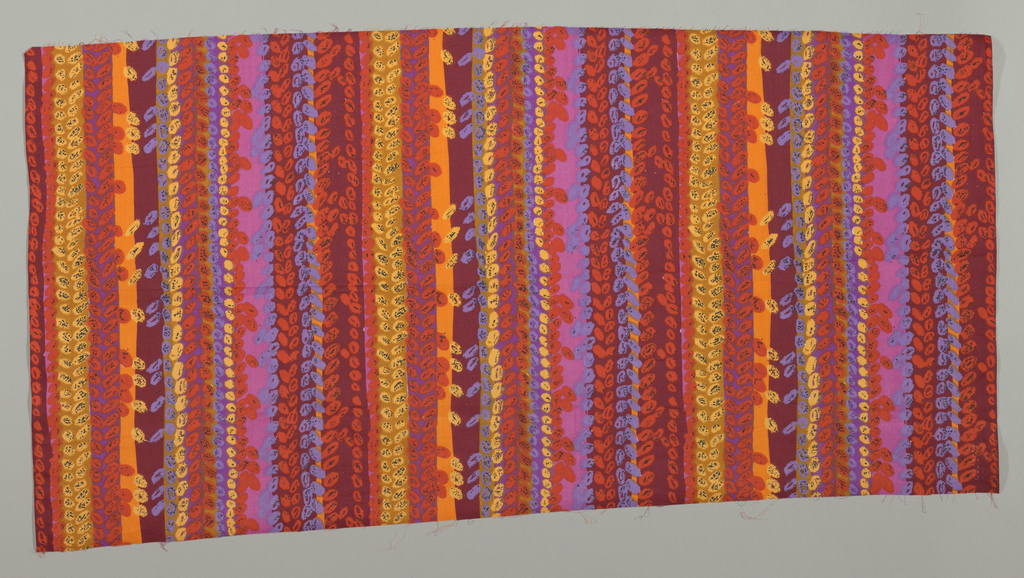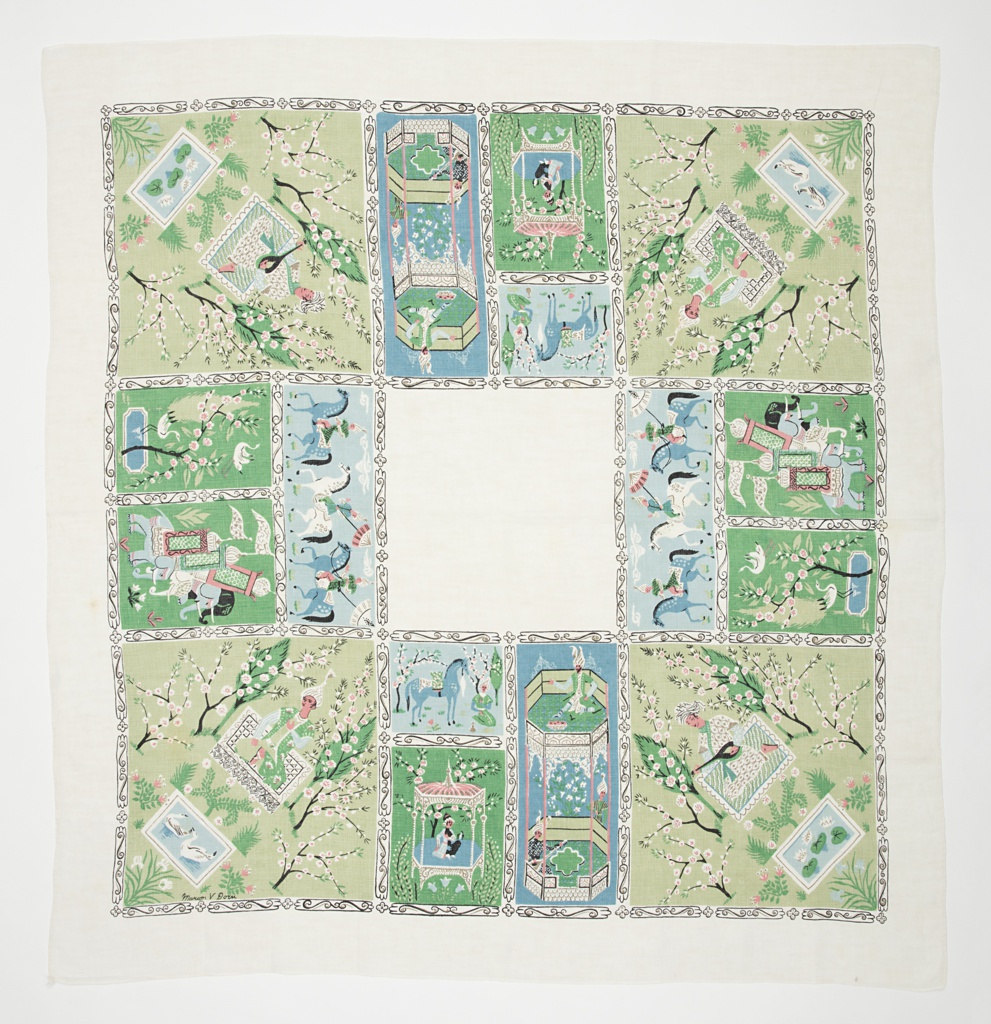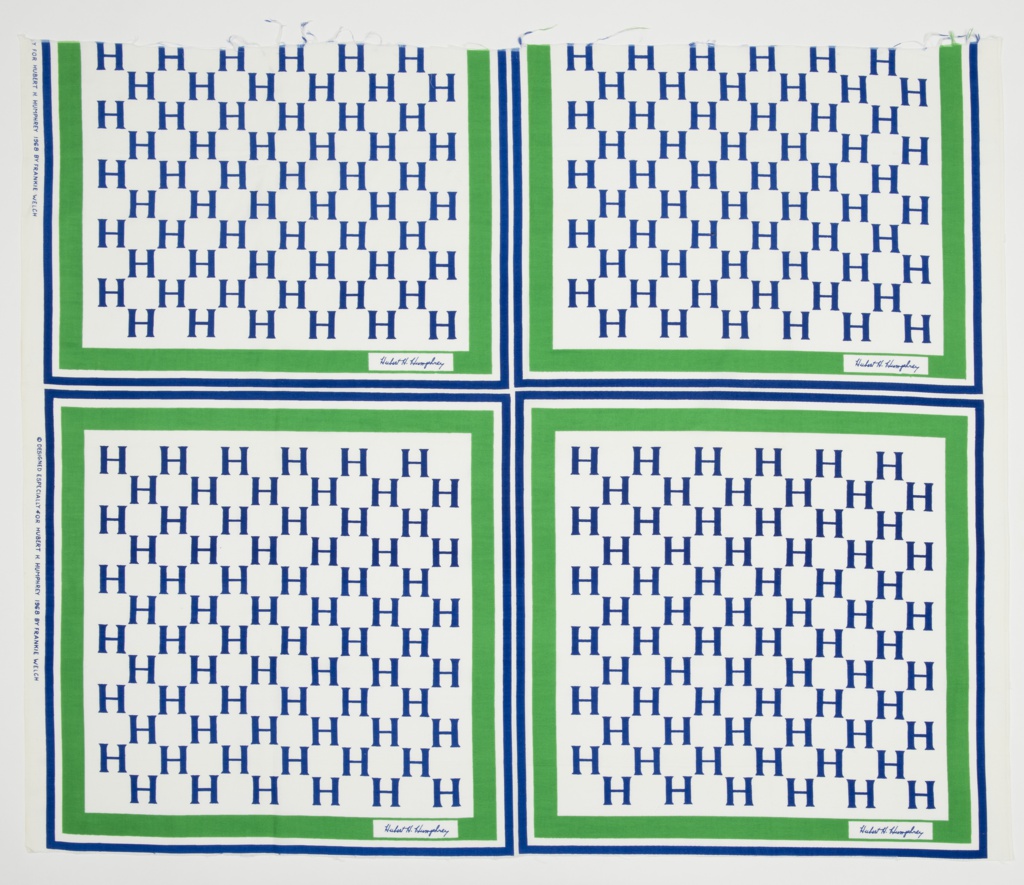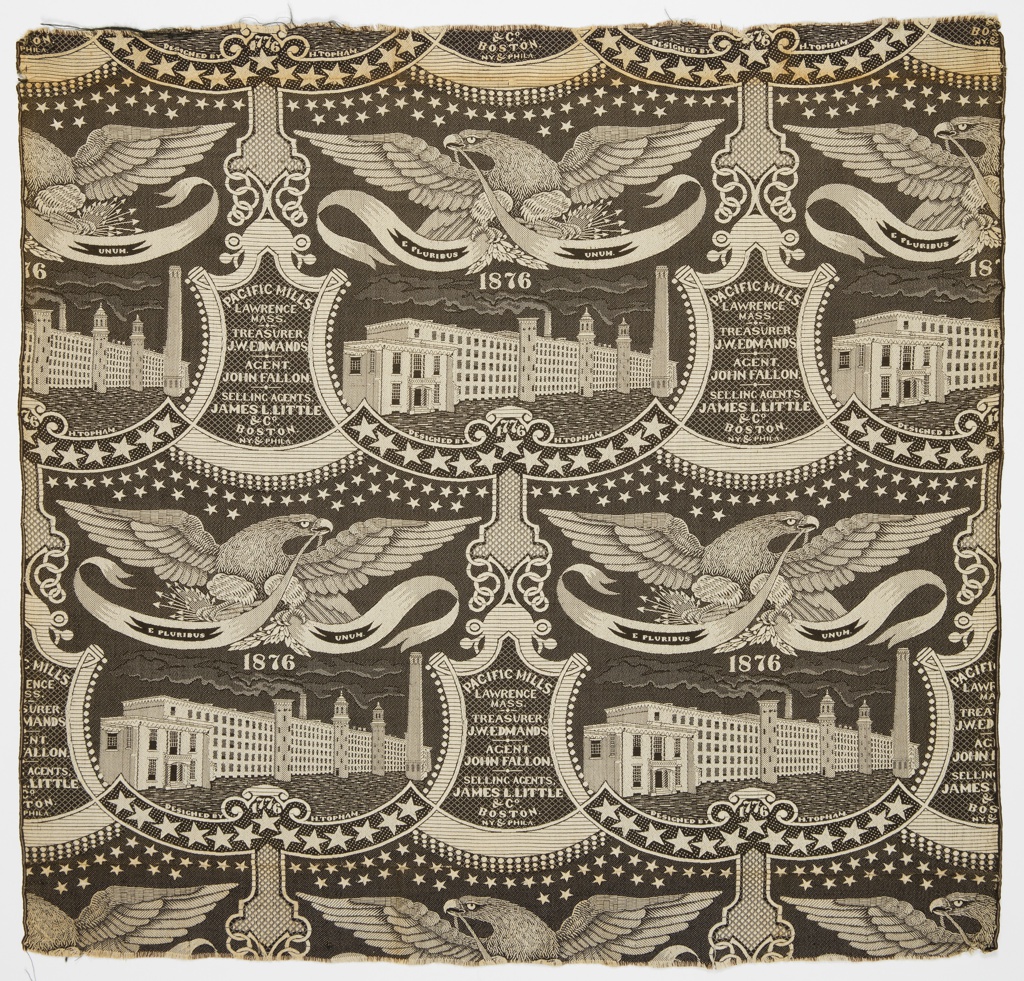Lanette Scheeline's lyrical interpretation of the California landscape translated into environmental wallpaper murals that enhanced the modern domestic interior.
Sophia Crownfield's delicate floral drawings informed her range of patented wallcoverings and textiles for a variety of manufacturers.
American designers Marion V. Dorn and E. McKnight Kauffer returned to New York in 1940 after a long, productive period working abroad in England. Their retreat, spurred by World War II, was a hasty one. Dorn, the more resilient of the pair, spent much of the 1940s re-establishing her career, even briefly designing scarves for...
Althea McNish (1924–2020) was one of the first Black women designers to receive international recognition for her achievements in design. Her textile Golden Harvest marks the beginning of a remarkable career for an under-recognized pioneer of 20th-century textile design.
Designers can find inspiration from varying forms of creative expression. Looking at the batik murals of the American artist and designer Lydia Bush-Brown (1887–1984), her sources seemed clear. Sketches capturing scenes from her travel in the 1920s to Syria and Italy can be found repeatedly in her work. Murals featuring Syrian villages on terraced hills,...
In celebration of National Design Month, October’s Object of the Week posts honor past National Design Award winners. In 2011, Knoll won a National Design Award for Corporate and Institutional Achievement. The company, known for fostering many talented international designers over the decades, is represented by more than 170 objects in Cooper Hewitt’s permanent collection. ...
September is New York Textile Month, a citywide celebration of textile creativity. As in past years, the museum is collaborating with the Textile Society of America. A non-profit professional organization of scholars, educators, and artists in the field of textiles, TSA provides an international forum for the exchange and dissemination of information about textiles worldwide....
September is New York Textile Month, a citywide celebration of textile creativity. As in past years, the museum is collaborating with the Textile Society of America. A non-profit professional organization of scholars, educators, and artists in the field of textiles, TSA provides an international forum for the exchange and dissemination of information about textiles worldwide....
September is New York Textile Month, a citywide celebration of textile creativity. As in past years, the museum is collaborating with the Textile Society of America. A non-profit professional organization of scholars, educators, and artists in the field of textiles, TSA provides an international forum for the exchange and dissemination of information about textiles worldwide....
September is New York Textile Month, a citywide celebration of textile creativity. As in past years, the museum is collaborating with the Textile Society of America. A non-profit professional organization of scholars, educators, and artists in the field of textiles, TSA provides an international forum for the exchange and dissemination of information about textiles worldwide....
As part of the African-Caribbean diaspora of the mid-twentieth century, textile designer Althea McNish had a lasting impact on British design over the course of her career . Born in Port of Spain, Trinidad, she studied painting and worked as a cartographer and illustrator for the British government there. [1] In 1951, she and her mother left the island to...
This colorful tablecloth was designed by Marion Dorn Kauffer, an accomplished twentieth-century designer primarily known for her textiles and carpets. Designing across different media, she also created wallpapers, illustrations, and graphics. The printed pattern that decorates this tablecloth features a series of square and rectangular vignettes inspired by Mughal painted miniatures from India. The vignettes...
This Hubert H. Humphrey “signature scarf” fabric was designed for Humphrey’s 1968 presidential campaign by Frankie Welch (a.k.a. Mary Frances Barnett), a textile and fashion designer as well as personal shopper and boutique owner. When her husband’s new position at the CIA first brought the Welch family to Washington, DC area in the 1950s, Frankie taught home...
This woven textile by Pacific Mills serves as a commemorative of the 1876 US Centennial while also promoting the textile manufacturer from Lawrence, Massachusetts – one of the largest textile producers in the Western Hemisphere during the nineteenth century. Woven in black and cream, the unusual composition has a bold graphic quality and depicts a...
This post was originally published on July 26, 2018. Stevengraphs are small woven pictures that depict famous buildings, historical events, iconic scenes, and prominent public figures such as members of royal families, politicians and athletes. They were produced by Thomas Stevens (English, 1828–1888), a Coventry weaver who customized the jacquard loom to produce small detailed...
